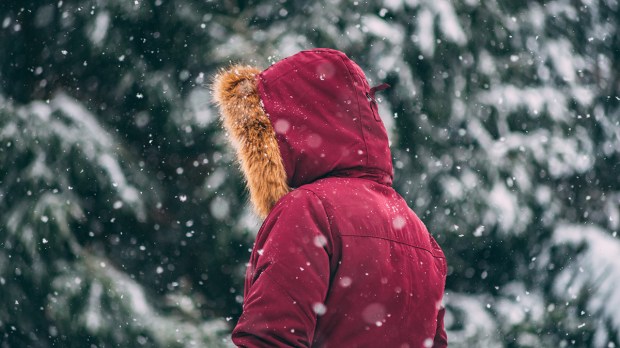Lenten Campaign 2025
This content is free of charge, as are all our articles.
Support us with a donation that is tax-deductible and enable us to continue to reach millions of readers.
It was October of 1880, and an early blizzard hit the Dakota Territory near the town of Desmet. As later told in the classic children’s book The Long Winter, it was just the beginning of what would be later known as one of the harshest winters on record, one that would not relent until early April. As repeated blizzards hit the area and temperatures reached well below zero degrees Fahrenheit, train travel to the area was finally forced to shut down due to repeated impassibility. Townspeople were left with the real threat of starvation and inability to survive the intense cold as their fuel ran out.
As movingly described by Laura Ingalls Wilder, drastic measures were taken to provide for food and warmth, including months of twisting straw into tight bundles for burning once the coal had run out. Long before the advent of electricity and artificial heat, the story of the long winter relays an incredible tale of hardship and resiliency on the Great Plains.
Depending on where you reside, winter has likely begun to set in. From where I write, the first snowflakes have arrived, ushering in subfreezing morning temperatures. For many, this time of year comes with increased lamentations, mood changes, and decreased activity outside in hopes of staying warm.
In Evansville, Indiana, where I live, we are southern enough to have extended warm periods, but northern enough to (usually) have a real winter that lasts for a few months. Like many areas of the country, being outside during this time typically requires more effort and also the desire and willingness to overcome the initial, visceral feeling of being cold that many people do not enjoy. At the same time, the holiday season kicks in, and many find themselves heading to a new year with an undesired gift of additional pounds.
But as Ingalls Wilder wrote around 80 years ago, our perspective on the cold does in fact affect our experience and perceptions of the cold, and how we go about acting in response to it. Like any other physical experience, when we find ourselves afraid, or even disconcerted or discomforted by a particular experience, human nature is to avoid it, even if it changes our habits in an unhealthy way. Of course, the more we avoid, the harder it is to change this pattern. And yet, in doing so, when it comes to the cold, I would argue that we are not just losing out on being outside and burning more calories, but also on the hidden promise that winter holds.
Tonight, I took my son, Will, for a walk. I decided it would be a good idea to take each of our kids for a walk over the next week, as it is a rare opportunity to spend some time with them alone. Initially, Will was resistant and wanted to stay back with the others, who were checking out some old videos from the summer. But within minutes, under the clear skies of a waning moon, his demeanor changed quickly as we set off on a circuitous two-mile route that mirrored the varied conversation along the way. At some point in the amble, after briefly speaking to a woman who was putting up her Christmas lights in the dark, Will exclaimed that he actually liked walking when it was cold because he wasn’t sweating and it felt quite good. I agreed. Over the years, some of my favorite walks, runs, and bikes have come during the winter chill—a time when the perception of harshness often gives way to a softness of the season, especially when the snowflakes fill the sky, once I have let go of the instinctive fear that cold conveys.
I realize that, as my wife will attest, we all have a slightly different temperature gradient, and thus comfort, when it comes to being in cold confines. And yet, I would argue that with the age of high-tech clothing designed to keep all of us warm even in very frigid conditions, Wilder’s treatise on the cold has more to do with the particular urge to avoid perceived discomfort than the actual cold itself.
Over the years, through my role as a psychologist, I have spoken to countless families about the importance of exercise throughout the year. Yet I can’t tell you how many times I have heard parents lament that they can’t send their kids outdoors because of the cold, or go out themselves, even as they know it is important. Mind you, by cold, we are not talking below zero, blizzard-like weather, but rather what many northerners would regard as quite a nice, crisp day.
When we train our kids, and ourselves, to spend extended time outside only when the weather is pleasant and warm, we are not only sending a message that creates barriers for good mental and physical health, we are also sending another message — especially to the younger generation — that uncomfortable circumstances are to be avoided at all costs, even if hidden opportunities are to be found there.
But for anyone who has ever read The Long Winter, I daresay that not only did we marvel at the ability of the townspeople to survive the winter, but even more so the ability of so many—including Pa and Ma—to repeatedly find a positive perspective in an otherwise brutal situation. They were probably acutely aware that when their will was compromised, so also were their lives likely to follow. But it doesn’t change that the model they provided is good for us all, no matter what the temperatures are like.
Most of us will probably be fortunate to never encounter such a frigid test of survival, although we might very well be challenged to survive and thrive in other ways — and many of us are certainly being tested today as we live through a pandemic. Regardless, there is much to learn from a story such as this, and how our ancestors learned to endure.
This past Monday, when the snow was blowing in and our kids were about to set out on their over half-mile walk to school, it was tempting to just have them pile in the van so they could forego the minor hardship. But as a parent who wants our kids to respect but not fear the cold, I realized it was an opportunity for them to find a little more resolve, and maybe even some joy, in this often unfavored season. Tonight, during our stroll, Will even said it was kind of fun walking in the snow. My heart was warmed.

Read more:
8 Ways to achieve a Catholic sense of “hygge” this winter

